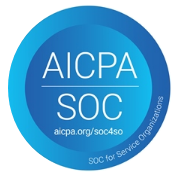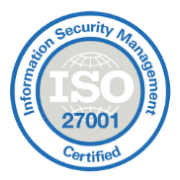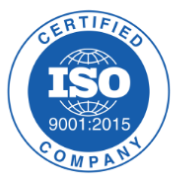In the rapidly evolving world of education and corporate training, Learning Management Systems (LMS) have become indispensable tools. As organizations strive to deliver effective, scalable, and cost-efficient learning solutions, Open Source LMS platforms are emerging as a game-changer. With the rise of AI-powered LMS and the increasing demand for flexible, customizable learning environments, 2025 is set to be a transformative year for the industry. In this blog, we’ll explore the best free Learning Management Systems for 2025, focusing on their features, benefits, and why they are the ideal choice for enterprises looking to stay ahead of the curve.
Why Open Source LMS is the Future of Learning
The demand for Open Source LMS platforms is growing exponentially, and for good reason. Unlike proprietary systems, open-source solutions offer unparalleled flexibility, customization, and cost-effectiveness. Enterprises can tailor these platforms to meet their unique needs, integrate them with existing tools, and scale them as their requirements evolve. Additionally, the collaborative nature of open-source software ensures continuous improvements, making these systems more robust and feature-rich over time.
As we move into 2025, the integration of AI-powered LMS capabilities is further enhancing the value of open-source platforms. From personalized learning paths to automated assessments and predictive analytics, AI is revolutionizing how organizations deliver training. This combination of open-source flexibility and cutting-edge technology makes Open Source LMS the go-to choice for forward-thinking enterprises
Top Open Source LMS Platforms for 2025
Here’s a look at some of the best free Learning Management Systems that are set to dominate in 2025:
1. Paradiso LMS
Paradiso LMS is a versatile and innovative Open Source LMS that combines the best of open-source flexibility with enterprise-grade features. Known for its user-friendly interface and extensive customization options, Paradiso LMS is designed to meet the needs of modern enterprises. In 2025, Paradiso LMS is expected to enhance its AI-powered LMS capabilities, offering advanced features like personalized learning paths, AI-driven content recommendations, and automated performance tracking. Its seamless integration with third-party tools and robust analytics make it a top contender for organizations looking to future-proof their learning and development strategies.
2. Moodle
Moodle has long been a leader in the Open Source LMS space, and its popularity shows no signs of waning. Known for its extensive feature set and active community, Moodle offers everything from course management to gamification and analytics. In 2025, Moodle is expected to integrate even more AI-powered LMS features, such as intelligent tutoring systems and adaptive learning technologies. Its scalability makes it suitable for both small businesses and large enterprises.
3. Canvas by Instructure
Canvas is another powerful Open Source LMS that has gained traction for its user-friendly interface and robust functionality. With a strong focus on collaboration and engagement, Canvas is ideal for organizations looking to create interactive learning experiences. The platform’s open-source nature allows for seamless integration with third-party tools, while its AI-powered LMS capabilities enable personalized learning and real-time feedback.
4. Open edX
Originally developed by Harvard and MIT, Open edX is a highly scalable Open Source LMS designed for both academic and corporate use. Its modular architecture allows enterprises to customize the platform to their specific needs, while its advanced analytics provide deep insights into learner performance. In 2025, Open edX is expected to leverage AI-powered LMS technologies to offer even more sophisticated learning experiences, such as virtual labs and AI-driven content recommendations.
5. Chamilo
Chamilo is a lightweight yet powerful Open Source LMS that prioritizes ease of use and accessibility. Its intuitive interface and comprehensive feature set make it a popular choice for organizations of all sizes. Chamilo’s commitment to innovation ensures that it will continue to evolve, with AI-powered LMS features like chatbots and automated grading expected to be added by 2025.
6. Sakai
Sakai is a collaborative Open Source LMS that excels in fostering communication and teamwork. Its robust tools for project management, forums, and assessments make it ideal for enterprises focused on collaborative learning. As we approach 2025, Sakai is likely to incorporate more AI-powered LMS functionalities, such as natural language processing for automated content creation and sentiment analysis for learner feedback.
Key Benefits of Open Source LMS for Enterprises
Choosing the right Open Source LMS can have a profound impact on your organization’s learning and development initiatives. Here are some of the key benefits:
Cost-Effectiveness
One of the most significant advantages of Open Source LMS platforms is their cost-effectiveness. Unlike proprietary systems, which often come with hefty licensing fees, open-source solutions are free to use. This allows enterprises to allocate their resources more efficiently, investing in customization and integration instead of software licenses.
Customization
Every organization has unique learning needs, and Open Source LMS platforms offer the flexibility to tailor the system accordingly. Whether it’s adding new features, integrating with existing tools, or creating custom workflows, open-source solutions provide the freedom to build a platform that aligns perfectly with your goals.
Scalability
As your organization grows, so do your learning needs. Open Source LMS platforms are inherently scalable, allowing you to add more users, courses, and features without compromising performance. This makes them an ideal choice for enterprises planning for long-term growth.
Community Support
The open-source community is a valuable resource for enterprises using Open Source LMS platforms. With thousands of developers and users contributing to the software, you can expect regular updates, bug fixes, and new features. This collaborative approach ensures that the platform remains cutting-edge and reliable.
Why 2025 is the Year to Adopt an Open Source LMS
As we look ahead to 2025, it’s clear that Open Source LMS platforms will play a pivotal role in shaping the future of learning. With their unmatched flexibility, cost-effectiveness, and AI-powered LMS capabilities, these systems are empowering enterprises to deliver impactful training programs that drive results.
Whether you’re a small business or a large corporation, adopting an Open Source LMS now will position you for success in the years to come. By choosing one of the best free Learning Management Systems available, such as Paradiso LMS you can create a learning environment that is not only effective but also future-proof.
Conclusion
The future of learning is open, flexible, and powered by AI. As we move into 2025, Open Source LMS platforms are set to become the backbone of enterprise learning and development. With options like Paradiso LMS leading the way, organizations have access to some of the best free Learning Management Systems available.
By embracing these platforms, enterprises can unlock new levels of efficiency, engagement, and innovation in their training programs. Don’t wait—start exploring the possibilities of Open Source LMS today and prepare your organization for a brighter, more knowledgeable future.

























